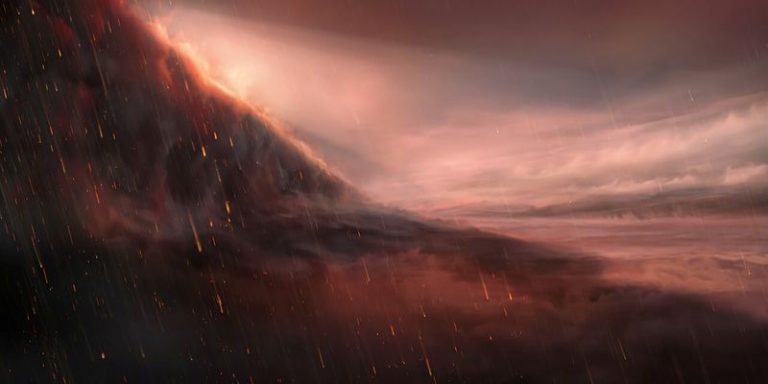Scientists have detected an exotic planet in another solar system where the weather forecast is always dire – a 100 percent chance of the most outrageous rain imaginable, with droplets of scaldingly hot liquid iron.
The researchers said on Wednesday they used the planet-hunting ESPRESSO instrument on the European Southern Observatory’s Very Large Telescope in Chile to observe a planet called WASP-76b located about 640 light years from Earth. It is nearly twice the size of Jupiter, our solar system’s largest planet.
Planets discovered outside our solar system are called exoplanets, and WASP-76b is one of the most extreme in terms of climate and chemistry. It is a member of a family of exoplanets spotted in recent years called “ultra-hot” gas giants.
Also Read:
NASA discovers three new exoplanets
Exoplanets could be habitable, scientist says
It resides outstandingly close to its parent star, which is almost twice as big as the sun. WASP-76b orbits at only three times the radius of that star, much closer than our solar system’s innermost planet Mercury orbits the sun. The same side of WASP-76b always faces its star, much as the same side of our moon always faces Earth.
WASP-76b receives 4,000 times the solar radiation that Earth gets from the sun, and its “dayside” is baked, broiled and barbecued, reaching 4,350 degrees Fahrenheit (2,400 degrees Celsius). This ferocious heat vaporizes metals present in the planet, with strong winds then carrying iron vapour to the planet’s cooler night side where it condenses into liquid iron droplets.
Read more: Reuters
Ask me anything
Explore related questions





